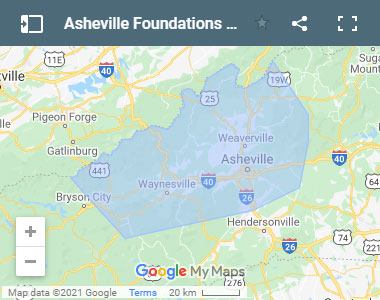Wall Anchors

We complete foundation repairs for bowing and buckling basement walls with wall anchors. Bowing foundations are usually caused by hydrostatic pressure - or water pressure against the foundation wall. This forces the foundation to withstand more pressure than it is capable of. The high level of pressure on the foundation walls forces them to move inward. Expansive clay soil and frost can also cause soil expansion, leading to foundation walls bulging and bowing.
Cracking, bowing, and buckling foundations are a serious problem which should be addressed as soon as possible to avoid serious expenses farther down the road. While you could replace the foundation, our repair system and wall anchors will ensure stability and strength at a fraction of the cost of replacement - and a fraction of the hassle.
Our anchorshave three main parts: an interior wall plate, a connecting steel rod, and an exterior earth anchoring system. Together, these pieces work to help reinforce your foundation wall and will to counteract the pressure being pushed against the wall.
Installation includes digging up a small area of lawn and then an anchor is placed in the ground, and a small hole is drilled into the basement wall from the inside. The steel rod slices through the soil to where the anchor is placed outside, fixed, on the rod. Your lawn is returned back to its initial state. A wall plate is mounted on the steel rod on the inside of the foundation which will be tightened (and repeatedly tightened to help pull the wall near or into its original position). Foundation wall anchors are inexpensive and can usually be installed within one day. We install all year, and the project can be finished with minimal yard disruption.
Commercial Foundation Helical Anchors

Helical wall anchors involve a long rod, and a corkscrew-like helical shaft which attaches to the wall plate on the inside of the walls. To install the anchor, we drill a hole into the wall (or in the case of block walls, a block or half-block is removed). Secondly, the helical anchor is inserted into the structure and anchored into the soil. Last, the hole is then filled with concrete, and a wall plate is installed over the top. Typically, several helical anchors are usually needed depending on the size of the wall.
We will be able to help you choose which foundation wall anchor solution is best for your home. We can also inspect your home to see if you also are in need of foundation piering to stabilize your basement floor. If you live in Asheville, NC, contact Asheville Foundations & Basements, LLC today for a free no-obligation foundation anchor estimate.
